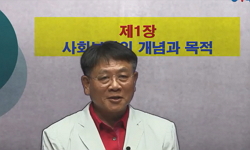보행은 일상생활을 영위하는데 가장 기본적이면서 중요한 활동이다. 본 논문에서는 가상의 Negative Damping 모델을 이용한 보행 보조용 고관절 외골격 로봇의 제어 기법을 제안한다. Negative Dampi...
http://chineseinput.net/에서 pinyin(병음)방식으로 중국어를 변환할 수 있습니다.
변환된 중국어를 복사하여 사용하시면 됩니다.
- 中文 을 입력하시려면 zhongwen을 입력하시고 space를누르시면됩니다.
- 北京 을 입력하시려면 beijing을 입력하시고 space를 누르시면 됩니다.

보행 보조용 고관절 외골격 로봇의 Negative Damping 제어 기법 = Negative Damping Control Strategy of a Hip Exoskeleton for Walking Assistance
한글로보기https://www.riss.kr/link?id=A105366344
- 저자
- 발행기관
- 학술지명
- 권호사항
-
발행연도
2018
-
작성언어
Korean
-
주제어
Hip ; Exoskeleton ; Walking ; Assistance ; Negative Damping
-
등재정보
KCI등재
-
자료형태
학술저널
-
수록면
117-124(8쪽)
-
KCI 피인용횟수
1
- DOI식별코드
- 제공처
-
0
상세조회 -
0
다운로드
부가정보
국문 초록 (Abstract)
보행은 일상생활을 영위하는데 가장 기본적이면서 중요한 활동이다. 본 논문에서는 가상의 Negative Damping 모델을 이용한 보행 보조용 고관절 외골격 로봇의 제어 기법을 제안한다. Negative Damping 제어 기법은 착용자와 외골격 로봇의 마찰과 무게로 인한 손실을 보상하여 착용자의 고관절 운동을 수월하게 해준다. 제안된 제어 기법은 착용자의 고관절 굴곡/신전 운동을 보조하기 위해 설계된 고관절 외골격 로봇에 적용하여 그 효과를 검증하였다. 실험 결과, 외골격 로봇을 입고 평지를 보행하였을 때 고관절의 구동범위는 약 21.9% 증가하였으며, 대퇴직근과 대퇴이두근의 근 활성도는 각각 18.0%와 23.7%정도 감소되는 것을 확인하였다.
다국어 초록 (Multilingual Abstract)
Human walking is a fundamental but important activity for active daily life. In this paper, we propose a virtual negative damping control strategy of a hip exoskeleton for walking assistance. The control strategy includes compensation efforts for the ...
Human walking is a fundamental but important activity for active daily life. In this paper, we propose a virtual negative damping control strategy of a hip exoskeleton for walking assistance. The control strategy includes compensation efforts for the gravitational effects and friction loss of the wearer and exoskeleton for assistance of hip flexion and extension movements during level walking. Our control strategy has been implemented in a hip exoskeleton designed to assist human subjects performing hip flexions and extensions. We also discuss an initial experimental study on the effect of our control strategy on the wearer. Based on our findings from the experiment, wearing the exoskeleton during level walking at self-selected walking velocity increases hip range of motion about 21.9% and also decreases muscle activation levels: about 18.0% in rectus femoris and about 23.7% in bicep femoris.
참고문헌 (Reference)
1 T. Yan, "Review of Assistive Strategies in Powered Lower-Limb Orthosis and Exoskeletons" 64 : 120-136, 2015
2 J. H. Kim, "Population Policy Outlook 2018" 255 : 61-74, 2018
3 J. M. Donelan, "Mechanical and Metabolic Determinants of the Preferred Step Width in Human Walking" 268 (268): 1985-1992, 2001
4 J. C. Selinger, "Humans Can Continuously Optimize Energetic Cost during Walking" 25 (25): 2452-2456, 2015
5 K. H. Seo, "Fully Autonomous Hip Exoskeleton Saves Metabolic Cost of Walking" 4628-4635, 2016
6 C. Buesing, "Effects of a Wearable Exoskeleton Stride Management Assist System (SMA(R)) on Spatiotemporal Gait Characteristics in Individuals after Stroke: A Randomized Controlled Trial" 12 : 1-14, 2015
7 J. W. Lee, "An Experimental Study of the Characteristics of Hydrostatic Transmission System" 29 (29): 939-946, 2015
1 T. Yan, "Review of Assistive Strategies in Powered Lower-Limb Orthosis and Exoskeletons" 64 : 120-136, 2015
2 J. H. Kim, "Population Policy Outlook 2018" 255 : 61-74, 2018
3 J. M. Donelan, "Mechanical and Metabolic Determinants of the Preferred Step Width in Human Walking" 268 (268): 1985-1992, 2001
4 J. C. Selinger, "Humans Can Continuously Optimize Energetic Cost during Walking" 25 (25): 2452-2456, 2015
5 K. H. Seo, "Fully Autonomous Hip Exoskeleton Saves Metabolic Cost of Walking" 4628-4635, 2016
6 C. Buesing, "Effects of a Wearable Exoskeleton Stride Management Assist System (SMA(R)) on Spatiotemporal Gait Characteristics in Individuals after Stroke: A Randomized Controlled Trial" 12 : 1-14, 2015
7 J. W. Lee, "An Experimental Study of the Characteristics of Hydrostatic Transmission System" 29 (29): 939-946, 2015
동일학술지(권/호) 다른 논문
-
피부 움직임을 고려한 착용형 무릎 각도 측정 센서 모듈 개발
- 한국재활복지공학회
- 안동영
- 2018
- KCI등재
-
물 섭취 장려를 위한 음수량 측정 가능한 커패시터 센서 개발
- 한국재활복지공학회
- 김미정
- 2018
- KCI등재
-
- 한국재활복지공학회
- 신동호
- 2018
- KCI등재
-
유한요소해석을 이용한 휠체어 휠 캠버각도에 따른 구조적 안정성 및 피로도 비교
- 한국재활복지공학회
- 바타르수렌 부진
- 2018
- KCI등재
분석정보
인용정보 인용지수 설명보기
학술지 이력
| 연월일 | 이력구분 | 이력상세 | 등재구분 |
|---|---|---|---|
| 2028 | 평가예정 | 재인증평가 신청대상 (재인증) | |
| 2022-01-01 | 평가 | 등재학술지 유지 (재인증) |  |
| 2019-01-01 | 평가 | 등재학술지 유지 (계속평가) |  |
| 2016-01-01 | 평가 | 등재학술지 선정 (계속평가) |  |
| 2015-01-01 | 평가 | 등재후보학술지 유지 (계속평가) |  |
| 2013-01-01 | 평가 | 등재후보 1차 FAIL (등재후보1차) |  |
| 2013-01-01 | 평가 | 등재후보 1차 FAIL (등재후보1차) |  |
| 2012-01-01 | 평가 | 등재후보학술지 유지 (기타) |  |
| 2010-01-01 | 평가 | 등재후보학술지 선정 (신규평가) |  |
학술지 인용정보
| 기준연도 | WOS-KCI 통합IF(2년) | KCIF(2년) | KCIF(3년) |
|---|---|---|---|
| 2016 | 0.27 | 0.27 | 0.32 |
| KCIF(4년) | KCIF(5년) | 중심성지수(3년) | 즉시성지수 |
| 0.38 | 0.36 | 0.566 | 0.16 |




 DBpia
DBpia





